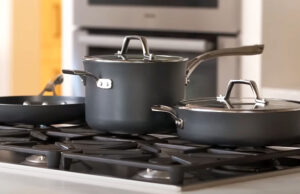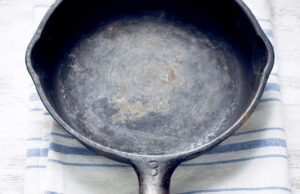As an Amazon Associate, I earn from qualifying purchases at no extra cost to you.
What’s the Symbol for Dishwasher Safe? Expert Guide
I always used to ruin my favorite mugs, thinking they could go straight into the dishwasher. One day, a small symbol on the bottom of my cup saved me a lot of headaches. That tiny icon can tell you whether your plates, mugs, or containers will survive a hot wash. It’s easy to miss but super helpful once you notice it. Knowing this symbol prevents cracked glass, faded prints, and wasted money.
Key takeaways: Look carefully at the bottom or back of your kitchenware for a small dishwasher icon, usually a plate or cup with water lines. Check the material and heat tolerance; plastic, glass, and ceramic differ. Avoid high heat cycles if unsure, and hand wash delicate items. Symbols can be embossed or printed. Always read labels and manufacturer instructions. Keep an eye on new dishware since some brands have unique symbols.
Recognizing The Dishwasher Safe Symbol
The dishwasher safe symbol is often tiny, but spotting it changes how you wash your dishes. Usually, it looks like a plate, glass, or fork with water lines above or a simple rectangle with wavy lines. Sometimes it’s embossed in the plastic or printed in ink, so you may need to tilt it in the light. I remember missing it on a fancy mug, thinking it was safe, and ended up with a warped handle.
It’s helpful to compare it to other symbols too. A crossed-out version usually means “do not wash in dishwasher.” Manufacturers love using icons to save space, but taking a second to understand them prevents accidents. Even if the symbol looks odd, check your product manual or packaging. Some high-end ceramics have unique icons, so don’t just assume.
Another tip is to look for words like “dishwasher safe” near the symbol. While symbols are universal, words add confirmation. Over time, spotting this icon becomes second nature, and you’ll avoid guessing. It’s like a secret code that protects your kitchenware.
- Look carefully at bottoms or backs
- Compare with printed instructions
- Tilt or use light to see embossed icons
- Words may accompany the symbol
Understanding Material Limitations
Different materials handle dishwashers differently, even if they show the dishwasher symbol. Plastic items, for example, might melt or warp under high heat. Glass can crack with sudden temperature changes. I once tossed a delicate glass into the dishwasher without thinking, and it shattered on the first cycle. Not fun.
Ceramics and porcelain usually tolerate dishwasher heat well, but painted or printed designs can fade. Metals like stainless steel are safe, but aluminum and copper often discolor. Always check the symbol against the material type. Sometimes, the symbol assumes normal dishwasher temperatures, not “hot wash” settings.
A helpful trick is to wash new items separately the first time. Watch for warping, fading, or any reaction. Once you’re confident, they’re safe for regular cycles. Over time, you’ll develop an intuition about which dishes can handle the heat.
- Plastics may warp
- Glass can crack
- Painted ceramics may fade
- Metals differ in safety
Choosing The Right Dishwasher Cycle
Even with a dishwasher-safe symbol, cycle choice matters. Standard cycles are fine for most items, but high-heat or heavy-duty cycles can damage delicate pieces. I learned this after ruining a set of coffee mugs with a “pots and pans” cycle. Oops.
Short cycles or eco modes can be gentler, especially for plastics or printed designs. Some machines have a “top rack only” option, which is great for fragile items. Position items to avoid them touching each other or the dishwasher walls. Overcrowding increases risk of chipping or cracking.
Also, avoid very hot drying settings unless the item explicitly says it can handle it. Sometimes hand drying is safer. Little adjustments like this make a huge difference in keeping dishes looking new.
- Standard cycles for most items
- Gentle cycles for fragile items
- Use top rack for delicate pieces
- Avoid overcrowding
Spotting Hidden Dishwasher Risks
Not all dishwasher-safe items are truly risk-free. Some plastic containers release chemicals if heated repeatedly. Wooden spoons or cutting boards can crack or warp. I once ignored a small icon on a wooden handle and paid the price with a split utensil.
Check seals and lids on containers. Rubber or silicone parts may degrade faster in dishwashers. Even a small dishwasher-safe icon doesn’t guarantee long-term durability. Rotate items and inspect regularly for damage. Replacing small parts early saves money and frustration.
Another tip is to separate delicate and sturdy items in the dishwasher. This prevents bumps and scratches. Consider handwashing high-value items to be safe. Sometimes, less risk is worth the extra effort.
- Plastic containers may degrade
- Wood can crack
- Inspect rubber seals
- Separate delicate and sturdy items
Caring For Dishwasher-Safe Items
Dishwasher-safe doesn’t mean indestructible. Proper care extends the life of your dishes. I usually rinse items quickly before loading to avoid stubborn stains. Avoid stacking too tightly; water circulation is key for cleaning and preventing scratches.
Check for discoloration or fading after a few cycles. If something shows early wear, consider handwashing next time. Regularly clean the dishwasher itself too; debris or detergent buildup can affect items. Even safe dishes need occasional gentle care.
- Rinse before loading
- Avoid stacking too tightly
- Monitor for wear and tear
- Clean dishwasher regularly
Reading Labels And Instructions
Always read labels and manuals. Some brands include symbols that are easy to miss or misinterpret. I learned this when a special ceramic bowl had a tiny triangle symbol I ignored, and it cracked after one hot wash. Manuals often explain symbol meanings clearly.
Take a few seconds to match icons with instructions. If in doubt, handwash it once. Some items may be partially dishwasher-safe, like “top rack only” or “avoid high heat.” Knowing these details prevents accidents and saves money.
- Always check labels
- Match symbols with instructions
- Handwash if unsure
- Follow partial dishwasher guidance
Final Thoughts
Understanding what the dishwasher-safe symbol really means saves money, time, and frustration. Tiny icons hold valuable information about material, heat tolerance, and care. Paying attention prevents cracking, fading, and warping. With practice, spotting symbols becomes second nature, making kitchen cleanup faster and safer. A few careful steps can keep your favorite dishes looking new for years.
| Item Type | Dishwasher Safe Symbol | Special Tips |
|---|---|---|
| Plastic containers | Plate with waves | Use top rack, avoid high heat |
| Glass cups | Glass with lines | Avoid sudden temperature changes |
| Ceramic plates | Plate with wavy lines | Monitor printed designs |
| Stainless steel | Fork or cup symbol | Avoid mixing with aluminum |
| Wooden utensils | None | Handwash to prevent cracking |
| Silicone lids | Wavy lines | Place securely, avoid high heat |
| Aluminum pans | None | Handwash to prevent discoloration |
| Porcelain bowls | Plate symbol | Gentle cycle, check manufacturer |
Frequently Asked Questions (FAQs)
Is it safe to put all plastics in the dishwasher?
Not all plastics are safe. Check for the dishwasher symbol, usually a plate or wavy lines. Top-rack placement is safer, and high-heat cycles can warp or melt some plastics. Harder plastics like Tupperware often survive better, but soft or thin plastics may deform. When in doubt, handwash to preserve shape and longevity.
Can glassware break even if it shows the dishwasher symbol?
Yes, sudden temperature changes can crack glass. Even dishwasher-safe glasses can chip if crowded or hit by other items. Top rack placement, gentle cycles, and avoiding high heat reduce risk. Always check for cracks after a few cycles to ensure safety.
Do I need to read the instructions if the item has the symbol?
Yes, symbols alone aren’t always enough. Manuals explain partial dishwasher safety, heat tolerance, and placement. Ignoring instructions can lead to fading, warping, or damage. Reading labels prevents accidents and saves money in the long run.
Is wooden kitchenware dishwasher safe?
No, wooden utensils, cutting boards, and bowls can crack or warp. Dishwasher heat and moisture damage the fibers. Handwashing and drying immediately is the safest approach. Occasional oiling helps maintain wood integrity and appearance.
Can metal items discolor in the dishwasher?
Some metals, like stainless steel, are safe, but aluminum and copper often discolor. High heat and detergent reactions cause changes in color. Separate sensitive metals, use mild detergents, and dry immediately for best results.
Do printed or painted dishes fade in the dishwasher?
Yes, even dishwasher-safe ceramics or porcelain can lose color over time. Gentle cycles, top rack placement, and avoiding high heat slow fading. Inspect designs occasionally and handwash highly decorative pieces.
Is it okay to overload the dishwasher with safe items?
No, overcrowding prevents proper water flow, causes scratches, and can chip delicate items. Arrange dishes with space in between. Rotate items if necessary to ensure complete cleaning and avoid accidental damage.
Can dishwasher-safe items still need special care?
Absolutely. Even safe dishes can wear down if exposed to high heat or abrasive detergents repeatedly. Monitor for cracks, fading, or warping. Handwash delicate items occasionally and clean the dishwasher regularly to extend lifespan.



